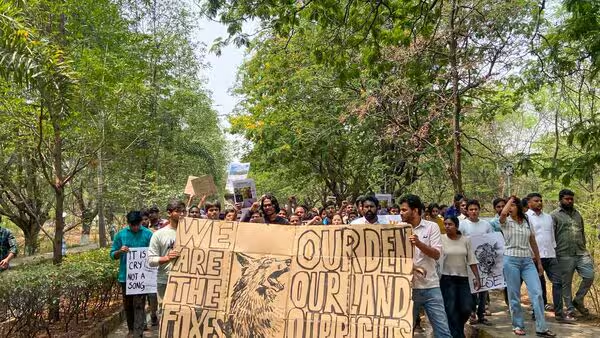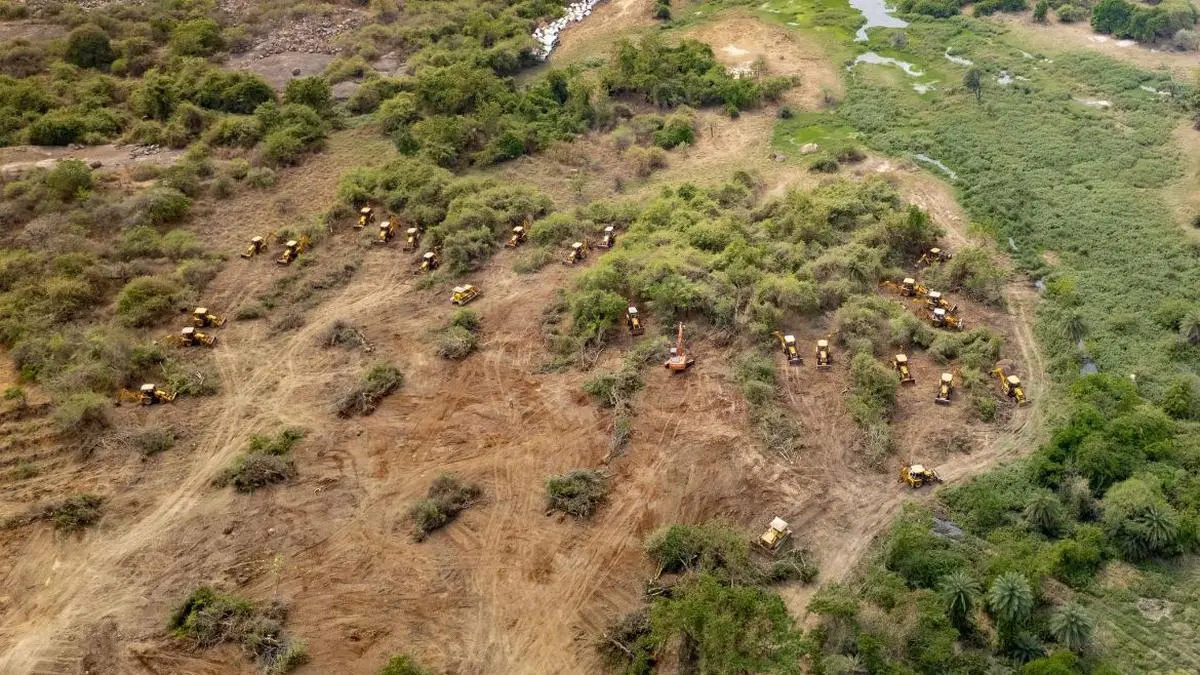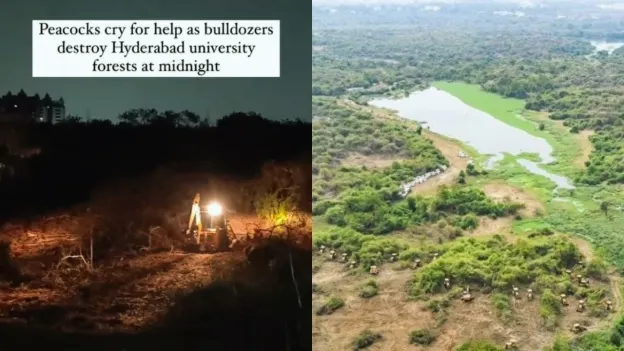Kancha Gachibowli Forest Hyderabad: A Vital Ecological Haven Under Threat 2025
The Kancha Gachibowli forest Hyderabad is a sprawling 400-acre green expanse located near the University of Hyderabad. Known for its rich biodiversity and ecological importance, this forest is home to over 700 plant species, 237 bird species, and several rare and endangered animals. However, recent development plans and deforestation activities have put this vital ecosystem at risk, sparking widespread protests and legal battles. This article explores the significance of Kancha Gachibowli forest, the threats it faces, and answers frequently asked questions about its future.

Why is Kancha Gachibowli Forest Hyderabad Important?
-
Biodiversity Hotspot:
-
The forest is home to unique species like the Hyderabad tree trunk spider (Murricia hyderabadensis), which is found nowhere else in the world.
-
It supports a wide range of wildlife, including spotted deer, wild boars, Indian rock pythons, and migratory birds like Oriental skylarks.
-
-
Climate Regulation:
-
The dense canopy helps reduce temperatures in surrounding areas by up to 4°C during summers.
-
It improves air quality by acting as a natural carbon sink and prevents soil erosion.
-
-
Water Conservation:
-
Two lakes within the forest—Peacock Lake and Buffalo Lake—play a crucial role in recharging groundwater levels and supporting aquatic ecosystems.
-
-
Cultural and Geological Significance:
-
The area features unique rock formations like the 2.5-billion-year-old Mushroom Rock, adding to its cultural and geological value.
-

Read More about JP Morgan Global Recession: Insights and Predictions for 2025
Threats to Kancha Gachibowli Forest Hyderabad
1. Deforestation for Development
The Telangana government has proposed clearing parts of the forest for infrastructure projects, including road construction and urban development. This has led to large-scale tree felling, endangering the ecosystem.
2. Loss of Habitat
The destruction of trees directly impacts nesting birds, mammals, reptiles, and amphibians that rely on the forest for shelter and food.
3. Climate Impact
Clearing the forest could lead to increased air pollution, higher local temperatures, and water scarcity in Hyderabad’s rapidly urbanizing landscape.
4. Legal Controversies
A Public Interest Litigation (PIL) has been filed seeking to declare Kancha Gachibowli as an ecologically sensitive zone to prevent further destruction.
Biodiversity at Kancha Gachibowli Forest Hyderabad
The forest is a treasure trove of flora and fauna:
-
Birds: Indian roller (Telangana’s state bird), Oriental skylark, Indian hoopoe
-
Mammals: Spotted deer, wild boars, porcupines
-
Reptiles: Indian rock python, Bengal monitor lizard
-
Amphibians: Common Indian toad, paddy field frog
-
Plants: Flame of the Forest (Butea monosperma), marking nut tree (Semecarpus anacardium)
Read More about Tata Capital Pankh Scholarship | Eligibility & Application Guide 2025

Current Status of Conservation Efforts
-
Supreme Court Intervention:
-
The Supreme Court has temporarily stayed deforestation activities until April 7, 2025, following protests from environmental activists and students.
-
-
Public Protests:
-
Students from the University of Hyderabad have staged demonstrations against tree felling, highlighting its impact on biodiversity and climate regulation.
-
-
Government Response:
-
The Environment Minister has sought a factual report from the Telangana government regarding deforestation activities.
-
-
PIL Filed:
-
Environmentalists have filed a PIL urging authorities to designate Kancha Gachibowli as a national park or ecologically sensitive zone.
-
Read More about SBI Magnum Taxgain Scheme Mutual Fund
FAQs About Kancha Gachibowli Forest Hyderabad
Q1: Where is Kancha Gachibowli forest located?
Kancha Gachibowli forest is situated near the University of Hyderabad in Hyderabad’s Gachibowli area.
Q2: Why is Kancha Gachibowli forest hyderabad important?
The forest is vital for biodiversity conservation, climate regulation, water recharge, and preserving unique geological formations like Mushroom Rock.
Q3: What species are found in Kancha Gachibowli forest?
It hosts over 237 bird species (e.g., Indian roller), mammals (e.g., spotted deer), reptiles (e.g., Indian rock python), amphibians (e.g., paddy field frog), and rare plants.
Q4: What are the threats to Kancha Gachibowli forest?
Deforestation for development projects poses significant threats to biodiversity, climate stability, and water conservation in the region.
Q5: What legal actions are being taken to protect the forest?
A PIL has been filed seeking its designation as an ecologically sensitive zone or national park under the Forest Conservation Act of 1980.
Q6: How does deforestation impact Hyderabad’s climate?
Clearing forests can increase local temperatures by up to 4°C and worsen air pollution while reducing groundwater recharge capacity.
Q7: What role do lakes in Kancha Gachibowli play?
Peacock Lake and Buffalo Lake support aquatic ecosystems while serving as critical water sources for wildlife.
Q8: Can Kancha Gachibowli be restored if deforested?
Restoration would be costly and time-consuming; preserving existing ecosystems is far more effective than recreating them artificially.
Why Protecting Kancha Gachibowli Forest Hyderabad Matters
-
Irreplaceable Ecosystem Services: The forest provides essential services like air purification, temperature regulation, and water conservation that benefit all residents of Hyderabad.
-
Unique Biodiversity Hotspot: Home to rare species like Murricia hyderabadensis, its loss would be irreversible.
-
Cultural Heritage Preservation: Features like Mushroom Rock hold historical significance that cannot be replicated elsewhere.
Conclusion on Kancha Gachibowli Forest Hyderabad
The Kancha Gachibowli forest Hyderabad, with its rich biodiversity and ecological importance, stands as a green lung for an urbanizing city struggling with climate challenges. While development pressures threaten this vital habitat, ongoing legal interventions and public protests emphasize its irreplaceable value. Preserving this natural treasure isn’t just about protecting wildlife—it’s about securing a sustainable future for Hyderabad’s residents.






0 Comment